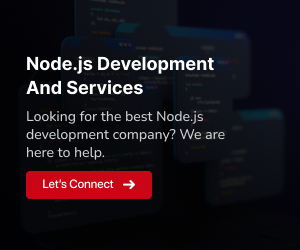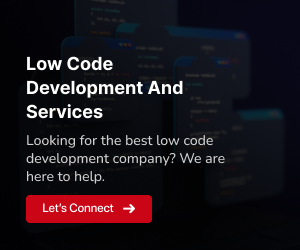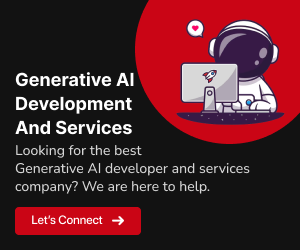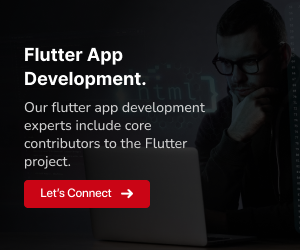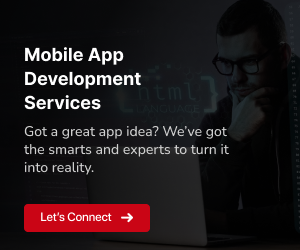Unlocking the Power of Flutter for USA-Based Mobile App Development
In the ever-evolving landscape of mobile app development, making the right choice can be the key to your project’s triumph. This holds especially true for businesses and developers in the United States, where excellence and innovation are the driving forces behind success. Enter Flutter, a dynamic and versatile framework that is rapidly becoming the go-to choice for USA-based mobile app projects. Renowned for its unparalleled cross-platform capabilities, Flutter empowers developers to craft visually captivating and high-performance apps, all while streamlining the development process. Whether you’re a seasoned pro or a newcomer to app development, this exploration of why choosing Flutter in the US is the smart decision will illuminate your path to success. Join us as we delve into the realm of Flutter, where innovation meets functionality, and discover why it’s the perfect match for your USA-based mobile app development endeavors.
What is Flutter: A Brief Overview and History
In the realm of mobile app development, Flutter is a revolutionary open-source framework developed by Google. It empowers developers to create stunning, natively compiled applications for mobile, web, and desktop from a single codebase. This section provides a comprehensive introduction to Flutter, including its history and evolution, giving readers a firm grasp of its significance in the world of app development.
Genesis of Flutter
Flutter began as an internal project at Google in 2011 under the codename “Sky.” Its primary purpose was to experiment with a new approach to building user interfaces. In 2015, Google unveiled Flutter to the world at the Dart developer summit. The framework was officially launched as an open-source project in 2017, quickly garnering the attention of developers globally.
Evolution of Flutter
Flutter has undergone remarkable growth and development since its inception. The following key milestones highlight its evolution:
Alpha Release (May 2017)
The initial alpha release of Flutter allowed developers to experiment with its capabilities and provide feedback.
Beta Release (February 2018)
The beta version introduced essential improvements and features, making Flutter more stable and reliable.
Stable Release (December 2018)
Flutter’s stable release marked its readiness for production-level app development, attracting more developers and businesses.
Web Support (May 2020)
Google announced Flutter’s support for web development, enabling developers to create web applications using Flutter.
Desktop Support (December 2020)
Flutter’s alpha release for desktop platforms extended its capabilities to build applications for Windows, macOS, and Linux.
Flutter 2.0 (March 2021)
With the release of Flutter 2.0, the framework became even more versatile, supporting mobile, web, and desktop platforms with a single codebase.
Why Flutter Matters
Flutter’s appeal lies in its ability to streamline the development process, reduce development costs, and create visually appealing, high-performance apps. With its vast library of customizable widgets, hot reload feature for rapid development, and support for expressive UI designs, Flutter has gained recognition as a game-changer in the world of mobile app development. This brief history and introduction to Flutter set the stage to delve deeper into its capabilities and understand why it has become a preferred choice for mobile app development in the USA and beyond.
Discover how AI and Machine Learning are transforming the landscape of Flutter app development in the USA in our blog: The Impact of AI and Machine Learning on Flutter App Development
Why the USA Should Embrace Flutter for Mobile App Development
In recent years, the landscape of mobile app development has witnessed a significant transformation, and the USA is at the forefront of this digital revolution. As the demand for mobile applications continues to surge, it’s crucial for American businesses and developers to explore cutting-edge technologies that can empower them to create exceptional mobile experiences. Flutter, an open-source UI framework developed by Google, stands as a compelling choice for mobile app development in the USA. Here, we delve into the key reasons why the USA should consider embracing Flutter for its mobile app development projects:
Cross-Platform Prowess:
One of Flutter’s standout features is its ability to facilitate cross-platform app development. In a diverse mobile landscape where both Android and iOS hold significant market shares, Flutter empowers developers to create a single codebase that runs seamlessly on both platforms. This cross-platform compatibility not only streamlines development but also allows businesses to reach a broader user base without doubling development efforts.
Exceptional User Interfaces:
Flutter is renowned for its capacity to produce visually captivating and highly interactive user interfaces. With a rich library of customizable widgets and the flexibility to create pixel-perfect designs, developers can craft apps that not only meet but exceed user expectations. This is particularly crucial in a competitive market where user experience can make or break an app’s success.
Rapid Development:
Time-to-market is often a critical factor in the success of a mobile app. Flutter accelerates the development process by enabling hot reload, a feature that allows developers to instantly view changes made to the code. This swift iteration cycle enhances productivity and ensures that developers can efficiently respond to evolving project requirements.
Cost Efficiency:
Flutter’s cross-platform capabilities contribute to cost savings. By building a single codebase for Android and iOS, businesses can optimize their development budget and reduce the resources required for maintaining two separate codebases. This financial prudence is especially appealing to startups and small to medium-sized enterprises (SMEs).
Strong Community Support:
Flutter benefits from a robust and rapidly growing community of developers and enthusiasts. This translates to a wealth of resources, including open-source packages, libraries, and plugins that can be readily integrated into projects. The community’s collaborative spirit ensures that solutions to common challenges are readily available.
Native Performance:
While Flutter apps boast a single codebase, they deliver native-like performance. Flutter leverages the Skia graphics engine to render visuals, resulting in smooth animations and fluid interactions that mimic the native experience. This performance excellence extends to resource-intensive applications, making Flutter a viable choice for demanding projects.
Ecosystem Advancements:
The Flutter ecosystem continues to evolve, with Google consistently enhancing the framework. Features like Flutter web and Flutter desktop have expanded the scope of Flutter beyond mobile devices, offering opportunities for web and desktop application development.
Secure and Stable:
Flutter prioritizes security and stability. Google’s dedicated team of developers and a large community work together to identify and address security vulnerabilities promptly. This ensures that Flutter remains a reliable choice for building secure and robust applications.
Efficient Development Workflow:
Flutter’s development workflow is efficient and developer-friendly. With features like a rich set of pre-designed widgets, a powerful layout system, and comprehensive documentation, developers can build applications faster without compromising quality.
Seamless Integration:
Flutter seamlessly integrates with other popular development tools and platforms. Whether you prefer using Android Studio, Visual Studio Code, or another IDE, Flutter offers smooth integration, streamlining the development process.
Wide Industry Adoption:
Flutter has gained widespread adoption across various industries, including finance, healthcare, e-commerce, entertainment, and more. Its versatility makes it suitable for diverse project requirements.
Future-Proof Technology:
Flutter is positioned as a future-proof technology. With Google’s continued commitment to its development and the framework’s ability to adapt to emerging industry trends, choosing Flutter is a forward-looking decision for long-term app success.
Enhanced Developer Productivity:
Developers can achieve higher productivity levels with Flutter. Its architecture, combined with the hot reload feature, reduces development time and allows for quicker iterations, making it easier to meet project deadlines.
Outstanding Performance Metrics:
Flutter apps consistently exhibit outstanding performance metrics. They have low app startup times, smooth animations, and responsive interactions, contributing to a positive user experience and high user satisfaction.
The adoption of Flutter for mobile app development in the USA is underpinned by its ability to streamline cross-platform development, create outstanding user interfaces, accelerate development cycles, and deliver cost-efficient solutions.
With a supportive community and continuous framework enhancements, Flutter is poised to shape the future of mobile app development in the USA, making it an enticing choice for businesses and developers alike.
Explore the latest trends and tips in our blog: Flutter App Development Tips & Trends to Follow in the USA
Exploring the Pros and Cons of Flutter
When considering Flutter for your mobile app development in the USA, it’s crucial to weigh its advantages and disadvantages. Here’s a comprehensive look at the pros and cons of using Flutter:
Pros:
Discover the advantages of choosing Flutter for your mobile app development in the USA:
Cross-Platform Compatibility:
Flutter shines when it comes to cross-platform development. It allows you to build apps for both Android and iOS using a single codebase, saving time and resources.
Hot Reload:
The hot reload feature enables real-time code changes, making development faster and more efficient. Developers can instantly see the effects of their code modifications.
Beautiful User Interfaces:
Flutter offers a rich set of customizable widgets, allowing developers to create stunning, pixel-perfect UIs that enhance the user experience.
High Performance:
Flutter’s architecture and use of the Skia graphics engine result in apps that deliver native-like performance, even for complex and graphics-intensive applications.
Strong Community:
Flutter has a growing and enthusiastic community of developers. This means access to a wealth of open-source packages, libraries, and plugins to accelerate development.
Cost-Efficiency:
Building a single codebase for multiple platforms reduces development costs, making it an attractive choice for startups and SMEs.
Consistency:
Flutter offers consistency in UI and behavior across different devices and platforms, ensuring a unified user experience.
Fast Development:
With Flutter, developers can create apps quickly, thanks to its extensive widget library and fast development cycle.
Integration-Friendly:
Flutter seamlessly integrates with existing native code, making it a viable choice for projects that require native modules.
Excellent Documentation:
Flutter boasts well-documented resources, making it easy for developers to get started and find solutions to common challenges.
Cons:
Explore the challenges and considerations when opting for Flutter in your app development:
Large App Size:
Flutter apps tend to have a larger file size compared to native apps. This can be a concern for users with limited device storage.
Limited Access to Native Features:
While Flutter provides access to native features, some platform-specific functionalities might require additional plugins or custom development.
Learning Curve:
Developers familiar with native development might face a learning curve when transitioning to Flutter, particularly when dealing with platform-specific issues.
Smaller Community:
While the Flutter community is growing, it’s still smaller than communities for more established frameworks, which can affect the availability of specialized resources.
Third-Party Dependencies:
Relying on third-party packages for specific features can introduce risks, as package maintenance and compatibility can vary.
App Store Size Limitations:
Both the Google Play Store and Apple App Store have size limitations for apps. Flutter apps that exceed these limits may face challenges during distribution.
Platform Differences:
Flutter’s goal is to offer platform-agnostic development, but subtle differences between Android and iOS may require platform-specific adjustments.
In the realm of mobile app development, Flutter shines as a versatile choice, offering cross-platform capabilities and a robust community. However, it comes with trade-offs, like slightly larger app sizes and some complexities when integrating native features. To leverage Flutter effectively in your USA-based projects, weigh these pros and cons carefully.
Explore the challenges and opportunities awaiting independent Flutter app developers in the United States in our blog: Challenges and Opportunities for Independent Flutter App Developers
Popular Apps Developed in Flutter
Flutter has played a pivotal role in the development of numerous popular mobile apps across various industries. Let’s take a closer look at some of these standout applications:
Alibaba
Industry: E-commerce
Features: Alibaba, one of the world’s largest online marketplaces, utilizes Flutter for its superior performance and delightful user interfaces. The app offers a wide range of features, including seamless product search, secure payments, and personalized recommendations.
Google Ads
Industry: Advertising
Features: Google Ads, a crucial tool for digital marketers, leverages Flutter for its cross-platform capabilities. The app allows advertisers to manage ad campaigns, monitor performance, and access valuable insights, all through an intuitive interface.
Reflectly
Industry: Health & Wellness
Features: Reflectly, a popular journaling and mindfulness app, relies on Flutter to deliver a visually pleasing and responsive experience. Users can journal their thoughts, track their mood, and receive personalized insights for improved mental well-being.
Hamilton
Industry: Entertainment
Features: Hamilton, the official app for the renowned Broadway musical, uses Flutter for its dynamic and engaging content. Users can access show information, purchase tickets, and enjoy exclusive multimedia content related to the production.
Watermaniac
Industry: Gaming
Features: Watermaniac, an addictive mobile game, showcases Flutter’s potential in the gaming industry. The game offers captivating gameplay, challenging levels, and stunning graphics, all thanks to Flutter’s capabilities.
These are just a few examples of the diverse range of apps that Flutter has empowered in various industries. Whether it’s e-commerce, advertising, health, entertainment, or gaming, Flutter continues to make a significant impact on mobile app development.
Closing Remarks: Flutter’s Influence on USA-Based Mobile App Development
Choosing Flutter for your USA-based mobile app development project is a strategic decision that offers a multitude of benefits. Flutter’s strengths lie in its cross-platform compatibility, fast development cycles, and robust community support. However, it’s essential to acknowledge potential challenges such as larger app sizes and occasional platform-specific adjustments. As the mobile app development landscape continues to evolve, embracing Flutter can provide a competitive edge in the ever-growing demand for mobile applications in the USA. In conclusion, the decision to adopt Flutter is a forward-looking one, aligning with industry needs and positioning projects for success in a competitive market.








